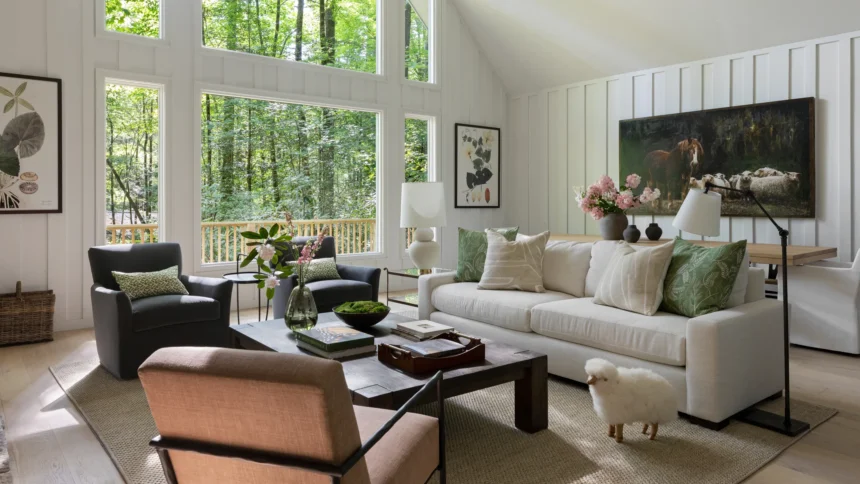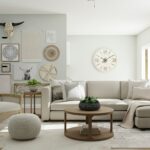Introduction: The Rising Importance of Side Tables
In contemporary interior design, side tables have transcended their traditional roles as mere supplementary pieces of furniture to become focal points in their own right. While they are often smaller than other furniture items, their impact on the aesthetic and functionality of a space can be monumental. This transformation is largely due to innovative designs, versatile functions, and the strategic placement that maximizes their potential.
Side tables are no longer just about holding a lamp or a book; they are about adding character to a room, offering storage solutions, or even serving as art pieces. As spaces become more multifunctional, the demand for furniture that can adapt and enhance is greater than ever.
The Evolution of Side Tables: A Historical Perspective
From Humble Beginnings to Decorative Accents
The journey of side tables can be traced back to ancient times when they were primarily utilitarian objects. Originally used for dining purposes or as bedside conveniences, these tables were crafted from basic materials and lacked any ornamental flair.
In the 17th and 18th centuries, side tables began to evolve into decorative accents in European homes. The introduction of intricate carvings and luxurious materials marked a shift from pure functionality to aesthetic appeal. By the Victorian era, side tables had become essential elements of interior decor, often displaying ornate designs that mirrored the opulence of the time.
Mid-Century Modernism and Beyond
The mid-20th century brought about a design revolution with the advent of mid-century modernism, which emphasized simplicity and functionality. During this period, side tables became sleeker and more minimalist, reflecting broader societal shifts towards efficiency and practicality.
Today, side tables embody a fusion of styles and influences from various eras, making them versatile enough to suit any interior theme.
Key Considerations When Choosing a Side Table
Size and Scale
When selecting a side table, size is paramount. A table that is too large can overwhelm a space, while one that is too small may get lost among other furnishings. It is crucial to consider the proportions relative to existing furniture such as sofas or beds.
Functionality
Consider what functions the side table will serve in your home. Will it act primarily as a decorative piece, or do you need additional storage? Some tables offer built-in shelves or drawers for added utility.
Compatibility with Existing Decor
The style and color palette of your existing decor should guide your choice of side table. A cohesive look can be achieved by selecting tables that complement these elements rather than clash with them.
Materials That Make a Difference
Wood: Timeless Elegance
Wood remains one of the most popular materials for side tables due to its versatility and timeless appeal. From rich mahogany to light oak, wooden side tables can suit both traditional and contemporary settings.
Metal: Modern Sophistication
Metallic finishes offer a sleek and modern look that can easily fit into industrial or minimalist designs. Options such as stainless steel or brass add an element of sophistication and are incredibly durable.
Glass: Transparency and Lightness
Glass side tables provide an airy quality that can make smaller spaces feel larger. They seamlessly blend into various decor styles without overwhelming existing aesthetics.
Mixed Materials
Many modern designs incorporate mixed materials to create unique textures and visual interest. Combining wood with metal or glass can result in striking contrasts that add depth to a room’s design.
Styles and Designs: From Minimalist to Maximalist
Minimalist Designs
Minimalist side tables often feature clean lines and subdued colors, focusing on simplicity and function over form. These designs work well in contemporary spaces where less is more.
Maximalist Approaches
Conversely, maximalist designs embrace bold colors, intricate patterns, and unique shapes. These statement pieces become focal points within a room, reflecting personality and creativity.
Eclectic Fusion
For those who love mixing styles, eclectic side tables offer a way to blend various design elements harmoniously. This approach allows for personal expression through unexpected combinations.
Multifunctionality: Beyond the Traditional Use
Modern living spaces demand versatility from furniture pieces, including side tables that serve multiple purposes:
– Storage Solutions: Many side tables come equipped with drawers or shelves for additional storage.
– Workspace Alternatives: Some designs incorporate fold-out sections suitable for laptops or writing surfaces.
– Dining Support: In small apartments or homes lacking formal dining areas, sturdy side tables can double as makeshift dining surfaces.
These multifunctional features increase usability while maintaining aesthetic appeal across different settings.
Placement and Arrangement: Creating Visual Harmony
Strategic placement plays an integral role in maximizing both form and function when incorporating side tables into your home:
– Balance: Avoid clustering all furniture on one side; distribute weight evenly throughout each area using symmetrical placements.
– Focal Points: Use distinctive designs as focal points within larger rooms by placing them centrally against neutral backdrops.
– Layering: Layer smaller objects atop larger ones (such as lamps atop books) atop larger objects (such as books), creating visual interest through varied heights.
Attention paid towards these factors ensures seamless integration into existing layouts while enhancing overall ambiance within each space!
Case Study: Home Kode’s Innovative Approach
Home Kode has emerged as an industry leader by redefining what it means for small furniture pieces like side-tables “steal-the-show.” Their approach combines cutting-edge technology with sustainable practices resulting in products designed not only meet consumer needs aesthetically but also environmentally responsible ways!
Their latest collection features modular components allowing users customize configurations based individual preferences while utilizing eco-friendly materials minimize carbon footprint associated manufacturing processes – proving how impactful thoughtful design choices truly are!
Budgeting for Style: Affordable Options with High Impact
Finding affordable yet stylish options doesn’t require sacrificing quality! Here are some tips achieve high-impact without breaking bank:
– Thrift Shopping : Explore second-hand stores find hidden gems waiting new life!
– DIY Projects : Unleash creativity by repurposing old items into custom creations perfectly suited individual tastes!
– Sales & Discounts : Keep lookout sales events discounts offered retailers throughout year maximize savings potential!
With little effort resourcefulness anyone achieve stunning results budget-friendly manner!
Future Trends in Side Table Design
As we look towards future exciting developments await world home furnishing particularly realm-side-table-designs! Some emerging trends include:
1) Smart Technology Integration : Incorporating charging ports wireless connectivity enhance functionality convenience daily life!
2) Sustainability Focused Designs : Increasing emphasis placed upon eco-conscious production methods materials ensure long-term benefits planet consumers alike!
3) Artistic Collaborations : Partnerships between designers artists produce limited-edition collections blur line between function art itself creating truly unique pieces collectors cherish years come!
In conclusion exploring possibilities surrounding small yet impactful additions such as ‘side-tables’ reveals wealth opportunities transform ordinary spaces extraordinary experiences!


